Anime is amazing for helping you relax and unwind. After a long, stressful day, there’s nothing better than putting on a soothing, feel-good anime to calm your mind. I have some great recommendations if you’re looking for the most chilled-out, relaxing anime to watch.
Slice-of-life anime is perfect for relaxation. They follow the daily lives of characters, with a focus on relationships over complex plots. Even if they’re not labeled “Iyashikei, ” which means “healing, ” slice-of-life shows have a super chill vibe.
My favorite healing anime is Yuru Camp. It’s about a group of girls going camping, and it’s so cozy and peaceful. Watching them hang out in nature and cook meals together is bliss after a tiring day. The soft art style and calm soundtrack add to its soothing atmosphere.
For something equally chill but a little more fantastical, check out Flying Witch. It follows a young witch adjusting to a new town and has the most serene, magic-infused vibes. The pacing is super slow to give you space to breathe and reset.
If you need deep relaxation, you can’t go wrong with Aria. This series about a quiet, futuristic version of Venice is the definition of “taking it easy.” It’s like an anime equivalent of a warm bath – completely envelopes you in its healing ambiance.
The Ghibli film My Neighbor Totoro is also perfect for recharging. Nothing beats watching those adorable forest spirits work their soothing magic.
Anime offers us so many avenues to destress. Next time you need to give your mind a break, look to the healing power of a calming slice-of-life or Iyashikei anime. They’ll melt your worries away and leave you feeling brand new.
Ristorante Paradiso
Love stories in anime aimed at adult women, referred to as josei anime, provide thoughtful alternatives to flashy teen romances. ‘Ristorante Paradiso,’ an 11-episode Josei series from 2009, crafts a subtle, nuanced romance story set against the backdrop of an Italian restaurant in Rome.
Through its well-developed characters, a celebration of food, and mature take on relationships, ‘Ristorante Paradiso’ delivers an engaging Josei anime experience.
The show follows protagonist Nicoletta, a young woman who travels to Rome to spy on her mother, Olga, who abandoned her as a child. To Nicoletta’s surprise, Olga has remarried prominent restaurateur Lorenzo of the Casetta dell’Orso restaurant.
Unable to reveal her identity, Nicoletta begins working at the restaurant while observing Olga’s new life. She gradually grows entranced by the warm, eccentric staff and refined atmosphere of Casetta dell’Orso.
At the heart of ‘Ristorante Paradiso’ lies its realistically messy, complex characters. Lorenzo carries guilt over separating Olga from Nicoletta but accepts the situation. Troubled chef Furio struggles with anger issues but produces divine cuisine.
Server Luciano begins falling for Nicoletta but is conflicted about the age difference. These nuances make the characters feel multi-dimensional. Olga, in particular, defies being the ‘evil mother’ archetype, shown as someone who found fulfillment through her own path.
The maturity in how characters’ emotions and motivations are portrayed adds realistic depth.
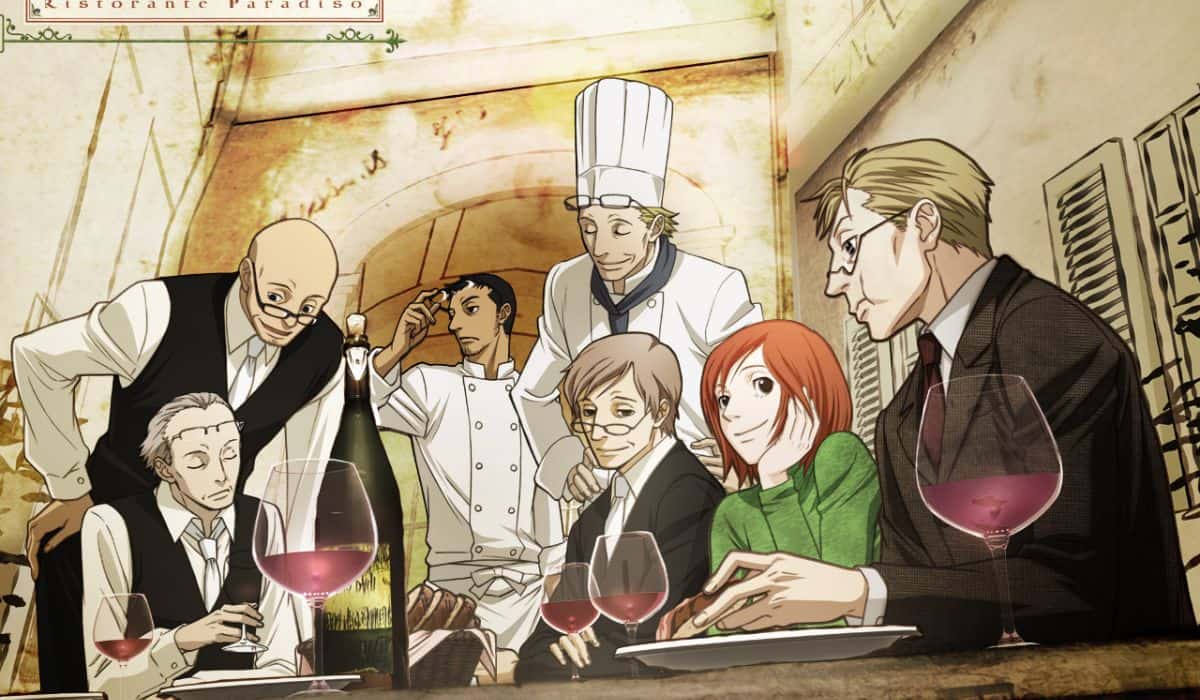
The romantic elements shine through the gradual development between Nicoletta and Luciano. Their interactions are subtle, starting from casual conversations to learning of each other’s pasts. Little moments like Luciano noticing Nicoletta’s new earrings demonstrate affection through observation.
Actual dates only happen halfway through the series, letting their emotional bond nurture naturally versus rushing into physical intimacy. It conveys mature romance as a process of truly knowing someone before committing.
The anime’s elegant visual presentation immerses viewers in Casetta dell’Orso’s warmth. Soft pastel colors, classical music orchestrations, and fine details like ornate silverware convey refined luxury. Character designs use simple lines but feel distinctive with touches like Furio’s unusual eyelashes.
The restaurant comes to life through bustling kitchen scenes and close-ups of delicious dishes. This welcoming atmosphere and a strong sense of place make Casetta dell’Orso feel like a living, breathing character itself.
Only Yesterday
Upon its release in 1991, the anime film ‘Only Yesterday’ by legendary Studio Ghibli offered a nostalgic trip through childhood memories. Directed by Isao Takahata, ‘Only Yesterday’ follows 27-year-old Taeko as she takes a vacation to the countryside, reflecting on her youth in 1966 as a fifth-grader while deciding her future path.
Poignant, meditative, and beautifully animated, ‘Only Yesterday’ sets itself apart with its emotionally resonant adult protagonist and timeless themes of nostalgia, transitions, and finding oneself.
The film’s dual timeline structure allows viewers to learn about Taeko’s past and present concurrently. In the 1960s timeline, we see young Taeko’s struggles with school, family, and first crush.
Interspersed are scenes of adult Taeko harvesting safflowers at a rural farm, conversing with kind locals, and contemplating major life choices. The interweaving of past and present depicts how memories shape who we become gracefully.
Taeko stands out as a protagonist, being an unmarried working woman uncertain about her future during a time when women faced immense societal pressure to marry and have children. Her self-reflection throughout the film feels deeply empathetic, voicing doubts and regrets many viewers experience in adulthood.
Taeko’s contemplative journey speaks to the importance of giving oneself time, patience, and compassion instead of meeting others’ expectations.

The strong writing fleshes out Taeko and other characters through relatable personality quirks and daily dilemmas. We learn much about Taeko through subtle moments like her getting motion sickness on buses or diligently tracking the family expenses.
The absence of a dramatic plot keeps the focus on realistic emotional arcs and inner lives. Every memory Taeko re-experiences adds insight into the ordinary events and decisions that accumulate into who we are.
Like its protagonist, ‘Only Yesterday’ takes an understated yet meaningful approach to nostalgia. Taeko rediscovers the forgotten treasures of childhood – catching tadpoles, stargazing, and eating hand-picked tomatoes.
The soothing pastoral countryside setting immerses us in the textures of a simpler time. The film tenderly evokes our shared experiences of innocence and discovery through childhood without romanticizing the past. Gentle emotional cathartic gets created through rediscovering what truly matters.
Chihayafuru
Since starting in 2011, the hit josei anime ‘Chihayafuru’ has captured viewers’ hearts through its emotional depiction of the competitive karuta card game and the growth of its passionate characters. Based on a manga by Yuki Suetsugu, this series follows Chihaya Ayase and her friends as they form a school karuta club and devote themselves to the intricate, fast-paced sport.
Blending sports drama with romance and slice-of-life, ‘Chihayafuru’s poignant 3 season run earns its reputation as a modern anime classic.
At its core, ‘Chihayafuru’ thrives on developing the motivations and inner lives of its characters with care. Protagonist Chihaya dedicates herself fully to karuta after being inspired by quiet classmate Arata, driven by her love for the game and for Arata himself.
The cocky yet insecure Taichi, Chihaya’s childhood friend, joins initially to support her but gets engrossed in Karuta’s strategy. Together with teammates like memorization master Kanade, the friends form bonds through the passion karuta ignites in them all.
Beyond the card-slapping action, the show derives drama from exploring how the characters devote themselves to their individual goals. We see Chihaya strain from conditioning her body, Taichi strategizing tirelessly, and Arata separated from friends as he moves away.
Each failure, setback, and sacrifice in preparing for tournaments hit with emotional weight because we understand what drives these ambitions. The grind becomes as engaging as the exhilarating competitive karuta bouts.
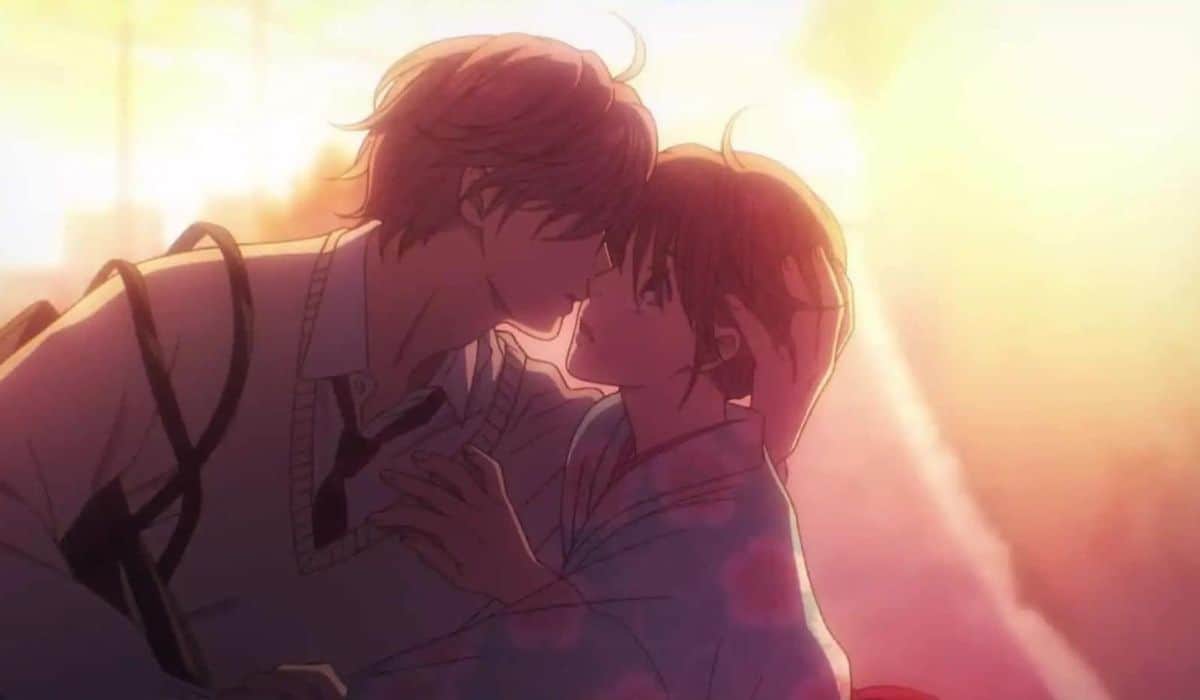
This strong characterization extends even to minor supporting roles like karuta mentors Harada and Coach Sakurazawa. Their dedication to nurturing the next generation’s talents gives otherwise routine training sequences poignant purpose.
Even returning season 1 opponents get fleshed out more as they seek to improve their skills. Seeing each person’s unique love for karuta depicted thoughtfully lets us relate to experiences of finding identity and meaning through passion.
The series also maximizes its emotional impact through a patient slice-of-life structure. Entire episodes focus on quiet scenes like the club cleaning the room, Chihaya shopping for a formal dress, or Taichi studying patiently, revealing their personalities and values.
When big moments happen, like Arata returning for a tournament, the buildup makes them feel earned. Meticulous details on traditions of karuta, clothing, and team bonding rituals enrich the immersive world-building. This slow-burn pacing may test some viewers but maximizes emotional payoffs.
Kids On The Slope
Kids on the Slope is a 12-episode anime series directed by Shinichiro Watanabe and produced by acclaimed studio MAPPA. Set in 1966, this coming-of-age drama follows introverted piano prodigy Kaoru Nishimi as he adjusts to a new high school and discovers a passion for jazz.
After years of constant relocations, Kaoru just wants to keep his head down and survive his last year of high school in Kyushu. But he soon gets drawn into the world of schoolmate Sentaro Kawabuchi, a troubled drummer who introduces Kaoru to jazz music.
Though initially opposites, a shared love for jazz forges a close bond between the two boys. The story beautifully captures the tunes, spirit, and aesthetic of 1960s underground jazz culture in Japan.
Watanabe, known for the influential Cowboy Bebop, demonstrates his musical storytelling mastery once again. Kids on the Slope weaves jazz both narratively and stylistically through each episode.
The jazz performances are fully highlighted through fluid animation and a vibrant color palette. Yoko Kanno, acclaimed for her Cowboy Bebop soundtrack, returns to craft a jazz-infused score true to the period. The music comes alive on screen thanks to meticulous details in the instrumentation and playing styles.
At the heart of Kids on the Slope is the endearing relationship between Kaoru and Sentaro. Though initially antagonistic, the two social outcasts bond over their shared musical passion and talent.
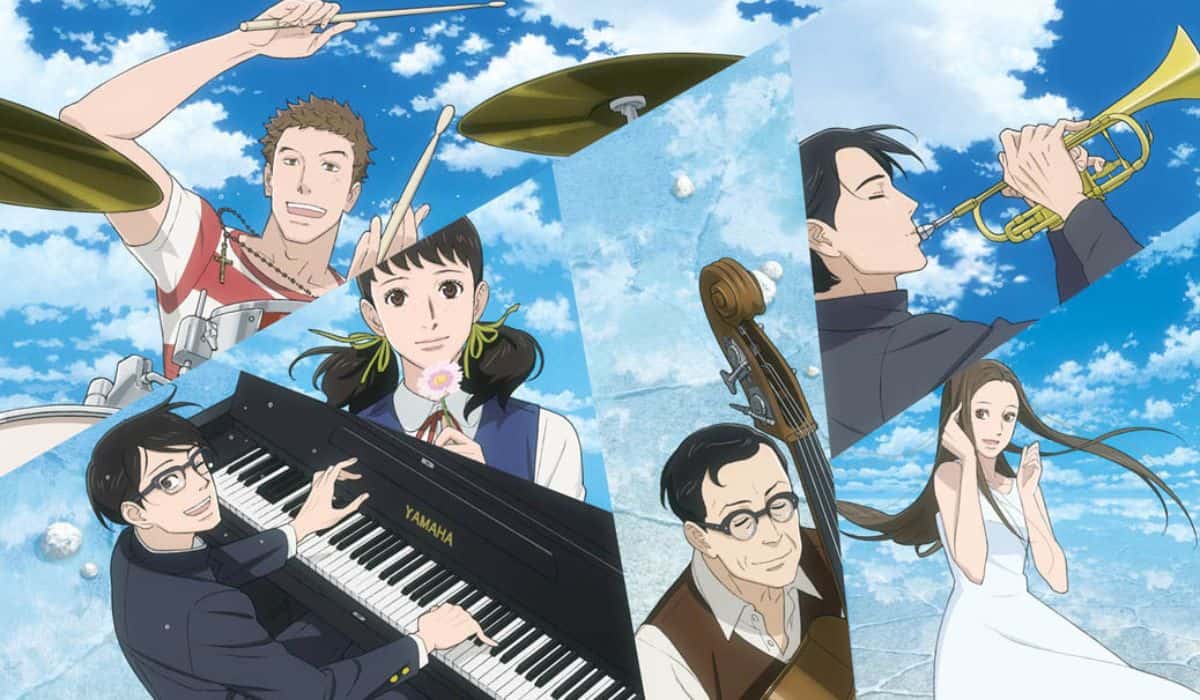
Sentaro’s outgoing personality draws the reserved Kaoru out of his shell. Their jam sessions on drums and piano become cathartic outlets for self-expression. This friendship develops alongside their budding adolescent feelings for Ritsuko, a schoolmate who shares their love for music.
Her record store clerk father introduced Sentaro to jazz, making their shop an oasis for the three teenagers amidst school pressures. Ritsuko’s warm, upbeat presence provides a counterbalance to Kaoru’s shyness and Sentaro’s volatility.
Beyond the core trio, the jazz club members and priest at Sentaro’s church bring the setting to life with period details. Each episode deepens the political and social backdrop of 1960s Japan, from class conflicts to challenges with Americanization.
Historic context around jazz and student movements helps ground the personal dramas. Kids on the Slope earned critical acclaim for blending music, romance, and slice-of-life drama against a rich cultural backdrop. Reviewers praised the accurate depiction of jazz, the nuanced characters, and the emotional storytelling.
Shouwa Genroku Rakugo Shinjuu
Shouwa Genroku Rakugo Shinjuu stands as a dramatic tour de force that depicts the art of traditional Japanese comedic storytelling known as Rakugo. Set during the mid-20th century Shōwa period, this poignant anime chronicles the lives of two renowned Rakugo performers, bringing viewers into this niche performance community.
Created by Studio Deen, the series originally ran for 13 episodes in 2016, with a second season of 11 episodes in 2017.
Direction and writing duties fell primarily to veteran voice actor Shin’ichirō Ueda in his first major directorial effort. Ueda himself was an apprentice Rakugo artist, lending the show an autobiographical touch. The anime follows Yotarou, an ex-convict aiming to revive the declining Rakugo art form in post-war Japan.
He becomes the apprentice to acclaimed Rakugo master Yakumo Yurakutei VIII. Their intertwined pasts reveal a melancholy story of mentorship, tragedy, and preserving cultural tradition against changing times.
Yakumo serves as the anchor around which the drama revolves. Once known as Kikuhiko, he was adopted into the famous Yurakutei name. Through extended flashbacks, we learn of his complex relationships with his volatile mentor, Yurakutei VII, and fellow apprentice, Miyokichi, a geisha.
Yakumo’s Rakugo performances are painstakingly animated and voiced to mimic the intricate verbal and physical performance. Beyond the story events, the anime gives viewers a crash course in various traditional Rakugo tales, comedy sketches, and storytelling mechanics.
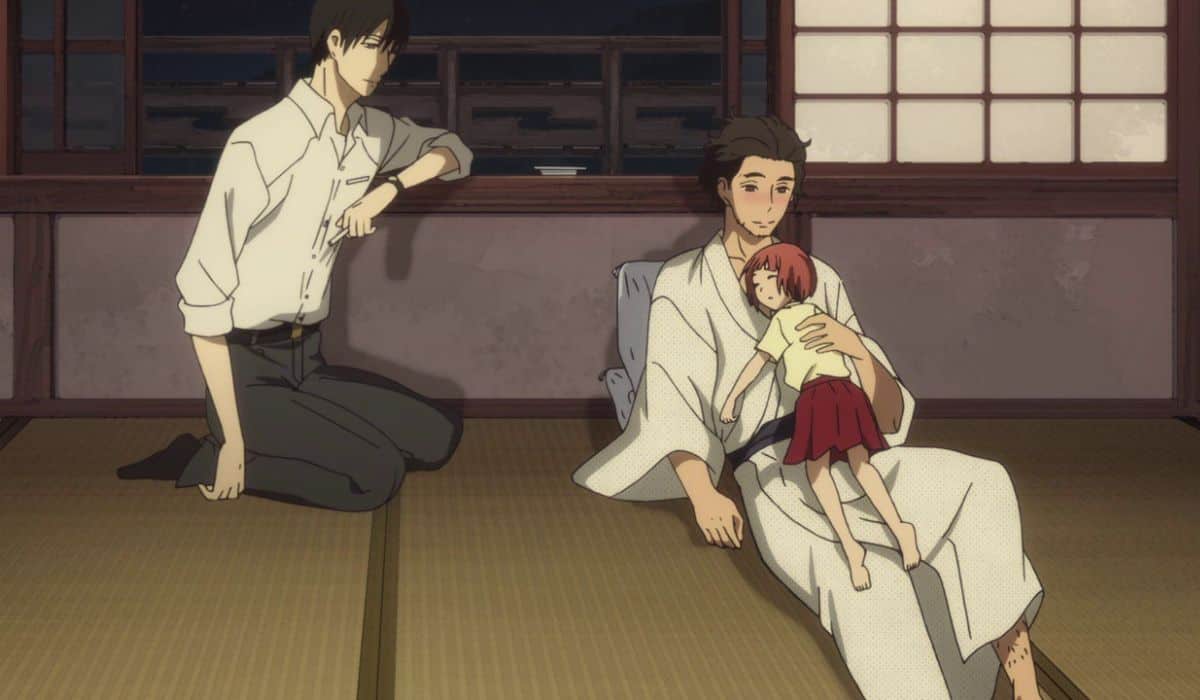
The voice acting and dialogue cleverly convey complex emotions and unspoken social dynamics between characters across class divides. Brief forays into Rakugo performances provide moments of levity amidst the interpersonal tensions and struggling theater world.
Shouwa Genroku Rakugo Shinjuu garnered immense critical praise for presenting a mature, nuanced vision of an insular art community over multiple decades.
The anime juggles themes of political upheaval, evolving social values, passion for tradition, mentor-student bonds, and, ultimately, aging gracefully. While set in the past, its poignant explorations of professional jealousy, sexual taboos, and generational conflicts feel relevant today.
The series attracted viewers who otherwise had little exposure to the niche art of Rakugo, educating them on its place in Japanese culture.
Hachimitsu to Clover
Hachimitsu to Clover is a coming-of-age romantic comedy-drama anime series directed by Ken’ichi Kasai and produced by J.C.Staff.
Based on the popular manga by Chica Umino, it aired in 2005 with two seasons totaling 37 episodes. The story follows five university students living together in Tokyo who support and grow alongside each other while figuring out their artistic passions and future paths.
The anime centers around Yūta Takemoto, a shy, indecisive art student unsure of his direction in life beyond college. He lives in an apartment with fellow art students Takumi Mayama and Shinobu Morita, as well as two fashion design students, Ayumi Yamada and Hagumi Hanamoto.
They form a close-knit circle that feels like family. Hachimitsu to Clover captures the uncertainty, adventures, and relational dynamics of students on the cusp of adulthood.
College serves as a transitional period fraught with career questions, romantic complications, and finding one’s place in the world. The group’s passionate pursuit of their individual artistic dreams provides motivation amidst the confusion. For Yūta, it is discovering his style as an artist through sculpture. For Ayumi, perfecting her sewing skills allows her creative vision to shine.
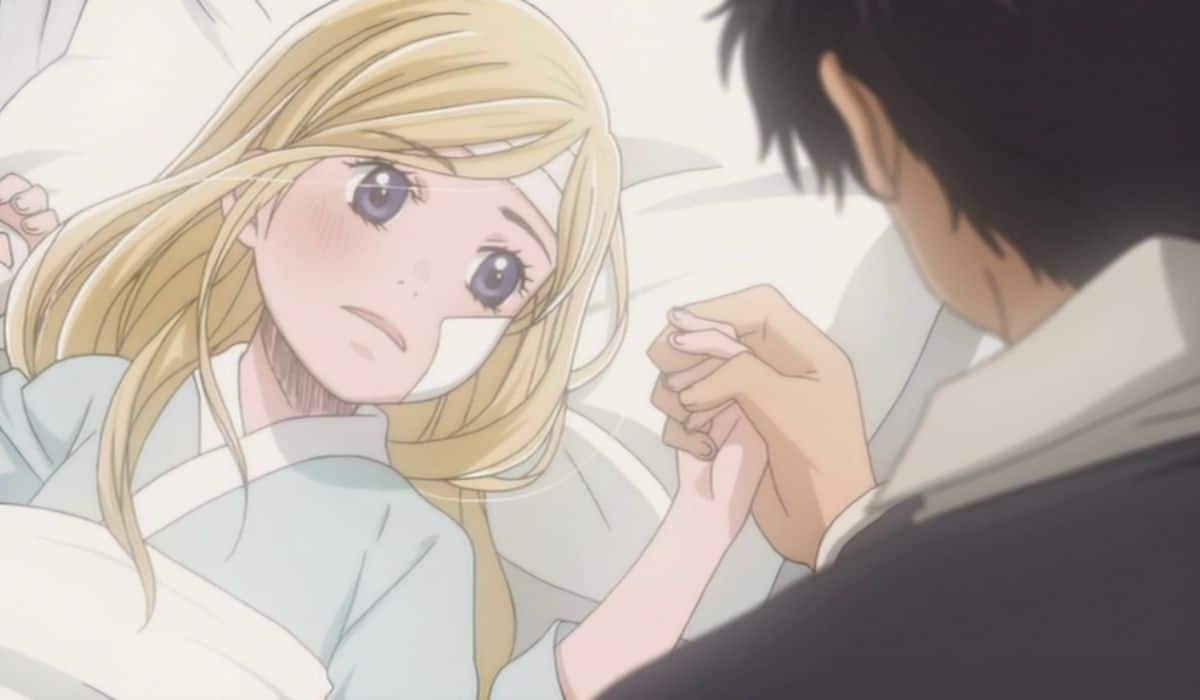
Much of the interpersonal drama stems from a quasi-love triangle between Yūta, Ayumi, and Takumi. While Ayumi crushes on Yūta, he harbors feelings for older student Rika Harada. The complex web of unspoken affections and jealousies stir up friction within the group.
At its core, Hachimitsu to Clover is about the joy and heartache of wholesome first love. Umino’s original manga title references the bittersweet transience of youth, like the brief blooming of clovers and honey’s fleeting sweetness.
The anime captures this wistful sentiment through its visual poetry. The lovely soft-hued background art and serene piano soundtrack cultivate an atmosphere of youthful wistfulness.
Daily life scenes at their apartment building have a nostalgic glow, whether the group is casually chatting or celebrating festivals together. This serves as a perfect backdrop for the honest characterization. Yūta and friends feel refreshingly down-to-earth, from their quirky habits to career self-doubt.
Polar Bear’s Cafe
Some anime impart profound philosophical lessons. Others showcase dramatic storylines that pull at the heartstrings. Then there are shows like the 2012 ‘Polar Bear’s Cafe’ that stand out for their simple everyday charms.
Based on the popular manga series, this 50-episode slice-of-life anime invites viewers into the warm atmosphere of a quirky cafe run by animals to deliver smiles, laughs, and small emotional moments of poignancy.
The titular cafe in ‘Polar Bear’s Cafe’ is indeed owned by a polar bear named Shirokuma who employs his animal friends like Panda and Penguin. Humanized with their own hopes, quirks, and friendships yet retaining some realistic animal behaviors, the mascot-like cast exudes adorable appeal.
Daily hijinks at the cafe drive the low-key plot as Shirokuma mentors the happy-go-lucky Panda between waiting tables and bantering with the sarcastic Penguin.
While largely episodic, the anime mines the cafe setting for all sorts of heartwarming stories and gentle humor. We meet lovely recurring customers like Black Cat, who keeps getting stood up by her feline friends.
Shirokuma’s art contests and attempts to expand the menu provide amusing scenarios. The staff heads to the zoo, hot springs, and art museum for charming escapades. Through small daily events, the appealing characters’ personalities and relationships organically develop.
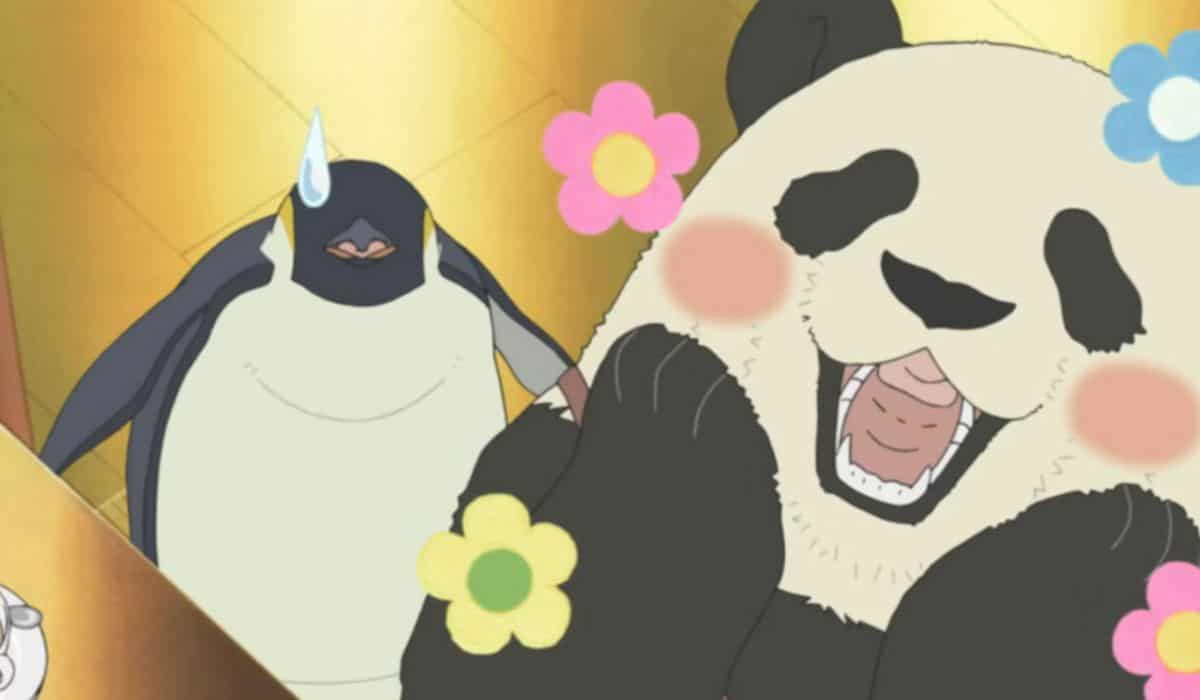
As with many slice-of-life series, ‘Polar Bear’s Cafe’ thrives on crafting a soothing, peaceful ambiance. The pastel-hued visuals in fluid yet simple character designs feel like a warm hug. Cheerful piano and guitar pieces enhance the relaxing mood.
The cast’s frequent tea drinking provides a recurring motif of slowing down to appreciate life’s little pleasures. The cafe itself becomes endearingly familiar, a space of acceptance.
While low-stakes, the characters’ interactions generate laughs and thoughtful moments in equal measure. Panda’s overzealous misadventures in customer service offer humor but also demonstrate his earnestness in honing work skills.
Shirokuma struggles with his weight but ultimately accepts himself. Penguins’ gossiping about romance reveals the animals’ very relatable concerns. Through their whimsical world, audiences can see their own hopes and dilemmas in a fresh light.
Mr. Osomatsu
The sextuplets are back after a 60-year hiatus! Mr. Osomatsu marked the revival of Fujio Akatsuka’s classic comedy manga Osomatsu-kun, bringing the mischievous Matsuno brothers into a new era with updated, irreverent humor. This 2015 anime finally gave the long-suffering sextuplets the full series they deserved, winning over old and new fans alike.
Our antiheroes remain the same at the core – six identically useless NEET siblings still living at home well into adulthood. Eldest Osomatsu, macho wannabe Karamatsu, crafty Choromatsu, sarcastic Ichimatsu, scatterbrained Jyushimatsu, and spoiled Todomatsu resume their scheming ways.
Whether competing for oden or avoiding work, their disastrous misadventures drive the Matsuno household into chaos.
Yet Mr. Osomatsu deftly modernizes the dated 60s manga into something hilariously relatable. The sextuplets’ lazy lifestyle, replete with pop culture references and internet humor, skewers modern young adults’ aimlessness. Iyami’s salaryman misfortunes and Dayon’s old geezer antics also resonate across generations.
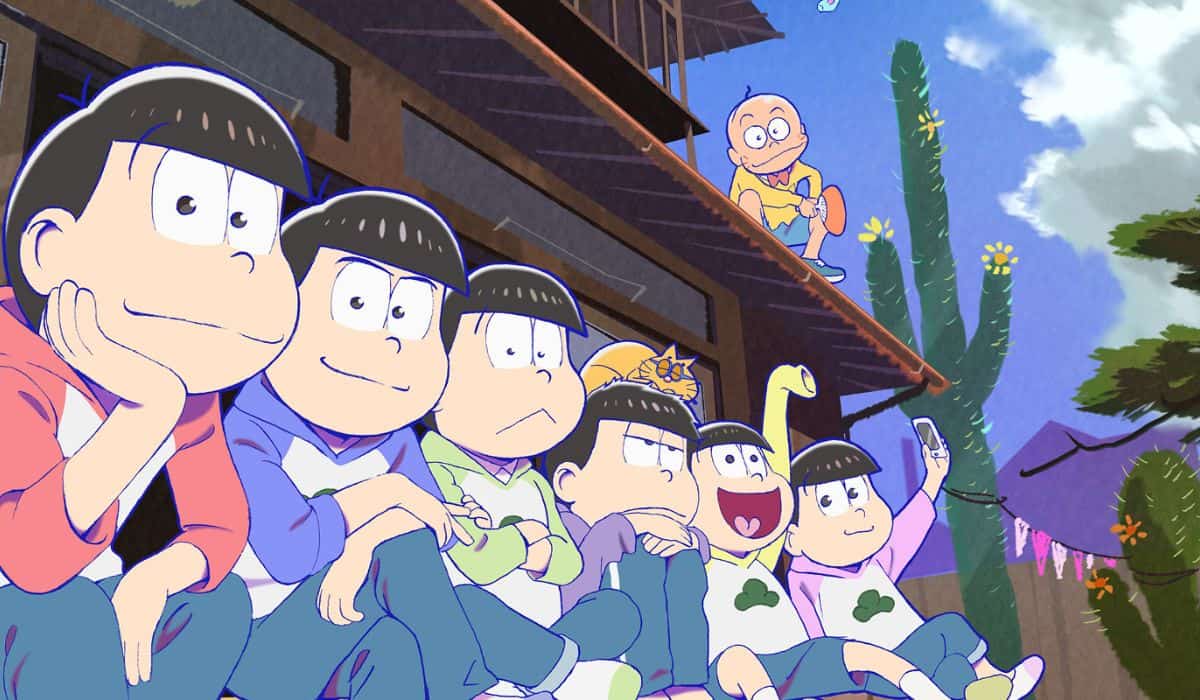
Crucially, female characters like Totoko and Chibita are elevated beyond one-note gag roles into fully realized figures that subvert tropes. Totoko’s superficiality masks her own insecurities, while Chibita’s hot-tempered ambition reveals hidden depths.
Mr. Osomatsu brings much-needed dimension to characters who were once mere caricatures. The anime’s segmented structure also amplifies absurdity. Brief vignettes string together nonsensical situations rather than a coherent plot, maximizing chaotic energy.
We never know what state we’ll find the Matsunos in next – pathetic host club employees, zany Fantastic Four parodies, or even identically bald salarymen! Anything is possible in Mr. Osomatsu’s crazy universe.
Yet beneath the insane gags, each brother’s unique personality still shines through. Ichimatsu’s deadpan snark makes him the fan favorite, but Jyushimatsu’s hyperactivity and Todomatsu’s savvy manipulation of his brothers also delight. Their quirks – like Karamatsu’s painful attempts at coolness – humanize the madcap chaos.
Nodame Cantabile
Classical music finds an unlikely muse in Nodame Cantabile, a comedy-drama that masterfully blends musical education with laughs. This infectious 2006 anime chronicles the odd couple friendship between dysfunctional prodigy Megumi “Nodame” Noda and perfectionist conductor Chiaki Shinichi.
Though initially clashing personalities and lifestyles, their shared passion for music ultimately transforms their lives in heartwarming ways. We first meet Shinichi, a talented pianist and graduate of Momogaoka College of Music, frustrated at lacking motivation.
Though a musical genius, he looks down on unrefined prodigies like Nodame, who embarrassingly lives up to her sloppy nickname. However, their fateful encounter awakening her stunted genius helps Shinichi realize he lacks her passion for spontaneous creation.
Nodame herself exemplifies raw yet unfocused talent, playing piano by ear but unable to read music. Smitten with Shinichi’s skill, she pursues him to Momogaoka to develop her abilities, even as her eccentric behavior exasperates him.
Their Odd Couple dynamic propels Nodame Cantabile’s comedy, punctuated by laugh-out-loud musical setpieces. Yet music also forges an emotional bond between them.
Nodame’s chaotic style balances Shinichi’s studied perfectionism, helping him reconnect with creativity beyond technique. In turn, Shinichi’s disciplined approach gives form to Nodame’s unfettered imagination. As they push each other, a charming romance subtly blooms through their complementary musical gifts.

Nodame Cantabile captivates with its comprehensive exploration of classical music’s world. The anime immerses us in techniques from conducting competitions while humorously skewering highbrow artistic pretension.
Real musical concepts are seamlessly woven into character growth, rewarding music fans without alienating newcomers. The anime also deftly juggles a varied ensemble beyond its central duo. Flamboyant Kuroki and stern Sakura round out the comic trio with Nodame.
Supporting figures like ambitious opera singer Tanya and Shinichi’s mentor Stresemann offer foils testing the leads’ resolve. While spotlighting our starring students, Nodame Cantabile paints a vibrant portrait of musical pursuits. Of course, the anime soars due to its toe-tapping classical soundtrack.
Iconic pieces from Beethoven, Mozart, and Rachmaninoff ignite dramatic moments. Nodame’s quirky improvisations enliven scenes with humor and charm. Romantic concertos underscore personal breakthroughs with poetic flair. Nodame Cantabile’s music always amplifies its narrative crescendos.
Yuri!!! On Ice
Yuri!!! On Ice beautifully carved its name into anime history as both a groundbreaking sports saga and a nuanced portrayal of LGBT+ relationships. Studio MAPPA’s stunning 2016 series broke conventions by centering around an openly gay competitive figure skater, earning acclaim for representation while enthralling viewers with graceful performances on the ice.
Japan’s Yuri Katsuki seems ready to quit skating after humiliating failure until his idol Victor Nikiforov offers to personally coach Yuri back to glory.
As Victor mentors Yuri, their bond evolves from professional to deeply intimate in natural, profound ways. Yuri!!! On Ice makes history by depicting their refreshing LGBT+ connection. Creator Sayo Yamamoto crafts their romance with authenticity and respect.
Yuri and Victor’s sincere affection, from hand-holding to tender embraces, unfolds with elegant subtlety. No exploitative tropes or superficial gimmicks – just poignant insight into the lives of two fascinating, complex people.
This nuanced portrayal spurs Yuri’s own growth. Initially anxious and insecure, he gains confidence through Victor’s empathetic support. Yuri!!! On Ice meaningfully explores self-acceptance parallel with falling in love. Yuri’s strength emerges not just to win but to deserve Victor’s faith in him, completing their exquisite symbiosis.
The anime ingeniously employs skating performances to reveal its characters’ inner selves. Yuri’s struggling Eros routine exposes his discomfort with sexuality, contrasted later by the raw sensuality of his fluid, masterful execution. Victor’s playfully theatrical displays give way to vulnerability, unveiling his longing for Yuri.
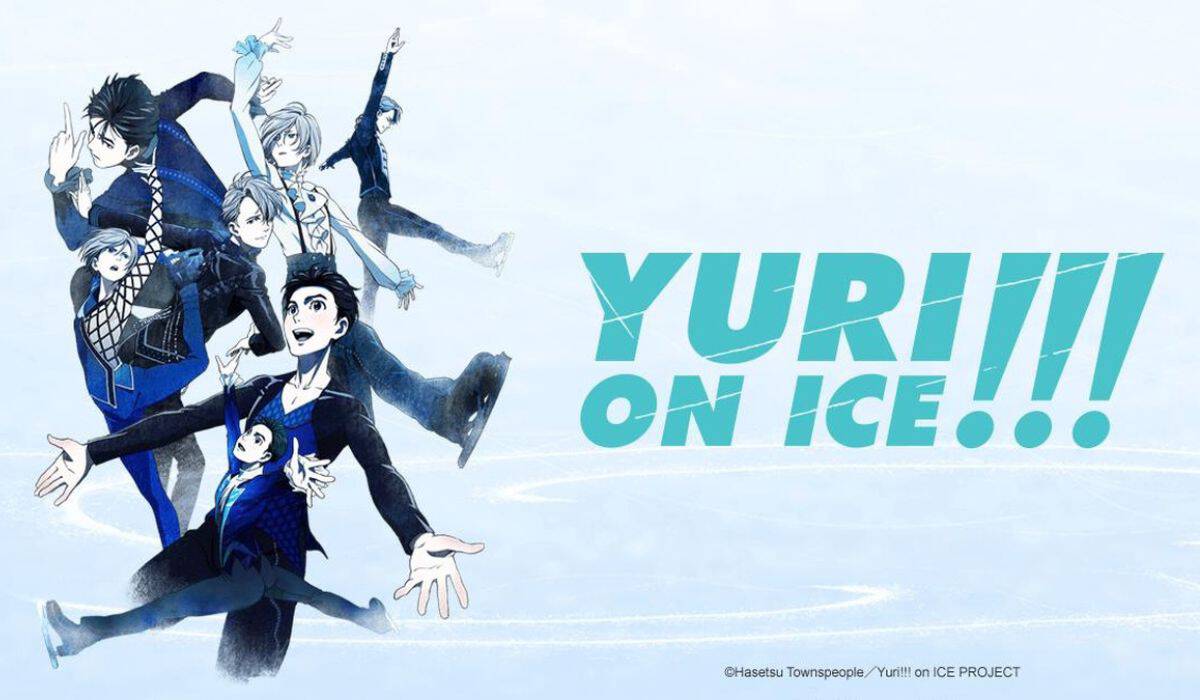
Every program progresses the narrative as much as championships. Spectacular imagination goes into Yuri, Victor, and rival Yurio’s inventive choreography matched by aesthetic animation. Flashy costumes and musical scores add spectacle, from Yurio’s breakneck heavy metal short to Otabek’s bold club mix.
But cinematic framing around emotions, not just athletics, makes each performance unforgettable. Levity also balances the drama. Outrageous coach Celestino, bubbly Phichit, and overzealous Yuri fangirl Minako and Mari lighten things up.
Yet even comic characters contribute, as when Phichit helps Yuri master his Eros persona by channeling The King and the Skater. Yuri!!! On Ice’s vibrant ensemble enriches its compassionate ethos. Make no mistake, the skating scenes are breathtaking in execution.
Fluid rotoscoped animation captures every nuanced glide, leap, and spin. Meticulous rendering of blades carving ice will awe casual viewers and experts alike. Real choreography by Kenji Miyamoto adds authenticity. This masterful athletic spectacle outshines most sports anime.
Paradise Kiss
Few anime capture the thrills and uncertainties of youth like Paradise Kiss, a fashion drama that compellingly explores adolescence through style and self-discovery. This mature 12-episode series from Madhouse deftly examines the coming-of-age process through the eyes of impressionable heroine Yukari Hayasaka.
Her whirlwind journey into the dazzling world of amateur model Arashi Nagase introduces Yukari to provocative ideas of identity and independence.
We meet timid Yukari just as she approaches her high school graduation. Focused solely on academics, she plans to follow the predictable path her parents mandate until fateful encounters with charismatic fashion student Arashi pull her into his ragtag atelier “Paradise Kiss.”
Becoming their amateur model awakens Yukari to new horizons beyond the conformity she knows. Paradise Kiss insightfully charts Yukari’s personal evolution as she embraces passions suppressed by expectations. Initially dismissing Arashi’s avant-garde aesthetics, Yukari comes to appreciate how fashion allows subjective self-expression.
Through daring photoshoots and runway shows, she gains the confidence to assert her own opinions and style instead of blindly obeying others. This coming-of-age arc interweaves beautifully with a thoughtful romance between Yukari and the enigmatic Arashi.
Their electrifying chemistry, complemented by the lovely character animation, ignites Yukari’s long-dormant individuality. She discovers intimacy’s joys and pains as Arashi’s secrets reveal his struggles beneath the cool façade. In each other, both find the courage to reach beyond familiar roles.
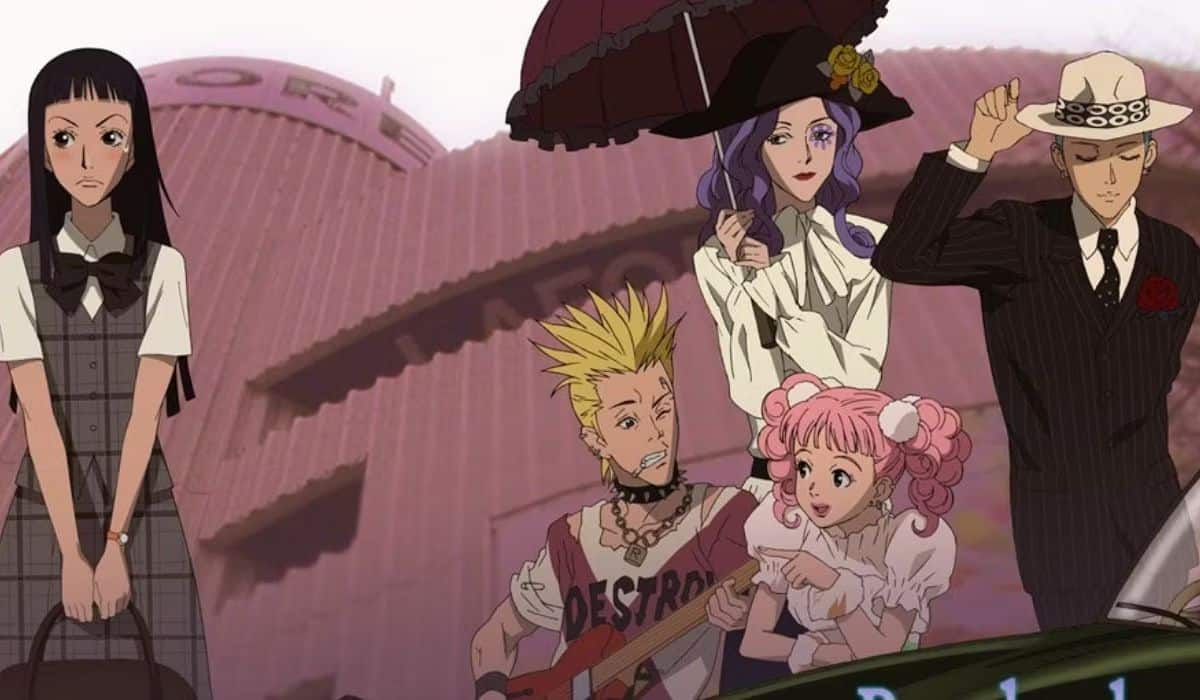
Paradise Kiss portrays liberating yet frightening freedom through evocative visuals. The atelier’s gothic architecture juxtaposed against bright clothes symbolizes the characters’ darker inner selves clashing with their outward appearances. Classroom scenes are devoid of color, with Yukari literally trapped inside frames until she breaks free. Paradise Kiss’ aesthetic cleverly reinforces its themes.
The eclectic supporting cast adds entertaining counterpoints to Yukari’s evolution. Miwako’s frivolous outlook masks her pragmatism, while Arashi’s friend George slowly reveals his wisdom and insecurities.
Even ostensible villain Kaori inspires Yukari, teaching that independence requires self-reliance, not just rebellion. Paradise Kiss crafts complex perspectives beyond black-and-white morality.
Anchoring the show is Yukari’s nuanced characterization and Seiyuu Marina Inoue’s outstanding performance. We feel her transition from passive teenage conformity to embracing agency over her future. Inoue injects Yukari with delicate subtlety, perfectly encapsulating youthful growth.
Raven Of The Inner Palace
Raven Of The Inner Palace is a Chinese anime that adeptly blends history, fantasy, romance, and political intrigue into an enthralling story. Set during the Tang Dynasty, the 24-episode series follows the adventures of our heroine, Raven, as she navigates the treacherous inner palace and attempts to uncover the truth behind her adoptive father’s death.
The story opens with the mysterious arrival of Raven, a young girl with no memories, at the cold palace where concubines who have lost the emperor’s favor are sent. She is taken in by Concubine Jing, who treats her with kindness and eventually adopts her.
Several years later, Concubine Jing suddenly dies from an unknown illness, spurring Raven to make her way to the imperial capital to investigate. This sets into motion a thrilling tale full of shadowy conspiracies, forbidden romances, and supernatural forces.
One of the main strengths of Raven Of The Inner Palace is the complexity of its characters. Raven herself is a fascinating protagonist – tough, courageous, but also emotionally vulnerable. She masks her true feelings behind a stoic facade as she contends with not just corrupt officials and power-hungry concubines but also her blossoming feelings for the equally complex Crown Prince.
Meanwhile, the dashing General Chu is a highlight whenever he is on screen, with his sharp wit and undeniable chemistry with Raven.
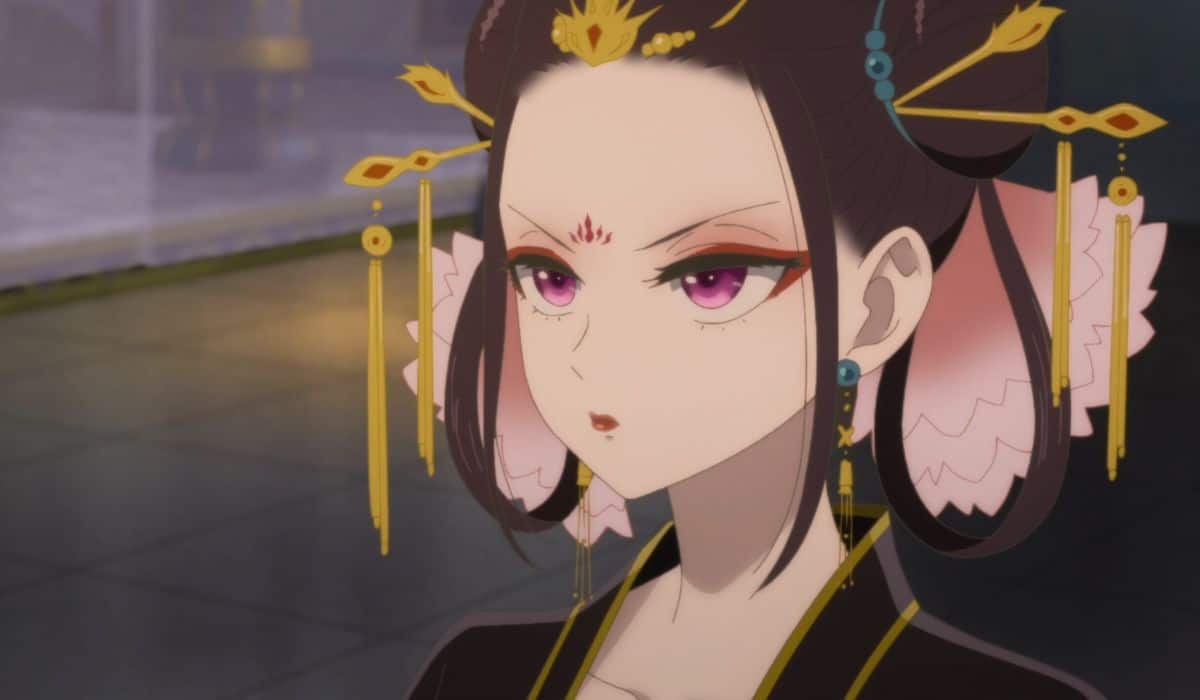
The show also features one of the most chilling villains I’ve encountered in anime – the ruthless and manipulative Wei Zhuangyuan. She presents the perfect antagonist for Raven, wielding influence through her beauty and intelligence rather than brute force.
Their tense game of cat-and-mouse heightens the drama and danger at the decadent imperial court. Adding to the mystique are the segments set in the expansive cold palace, captured with haunting visuals straight out of a gothic tale. This creepy setting contrasts wonderfully with the bright splendor of the imperial capital portrayed during the daytime.
The aesthetic plays with light and shadow in a way that mirrors the growing entanglement between Raven and the darker forces threatening the kingdom. The anime boasts impressive production values, with exquisitely detailed clothing and backdrops recreating Tang Dynasty China.
The peaceful countryside scenes are brilliantly verdant and idyllic. The music ranges from delicate piano during emotional conversations to thrilling percussion-driven battle themes.
Honorable Mention:
The Quintessential Quintuplets
A poor, straight-A student is hired to tutor some rich quintuplets. The story is told as a flashback from the future that shows that he ends up getting married to one of them. A poor, straight A student is hired to tutor some rich quintuplets.
But what you might be looking for here is Gotoubun no Hanayome Tashimai de Harem Tsukutteru by Terasu MC, which features the character Yotsuba.
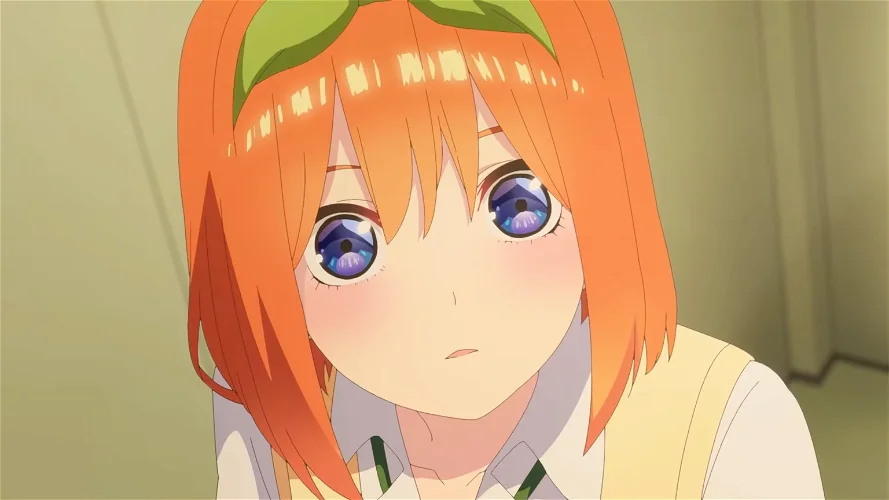
Oshi No Ko
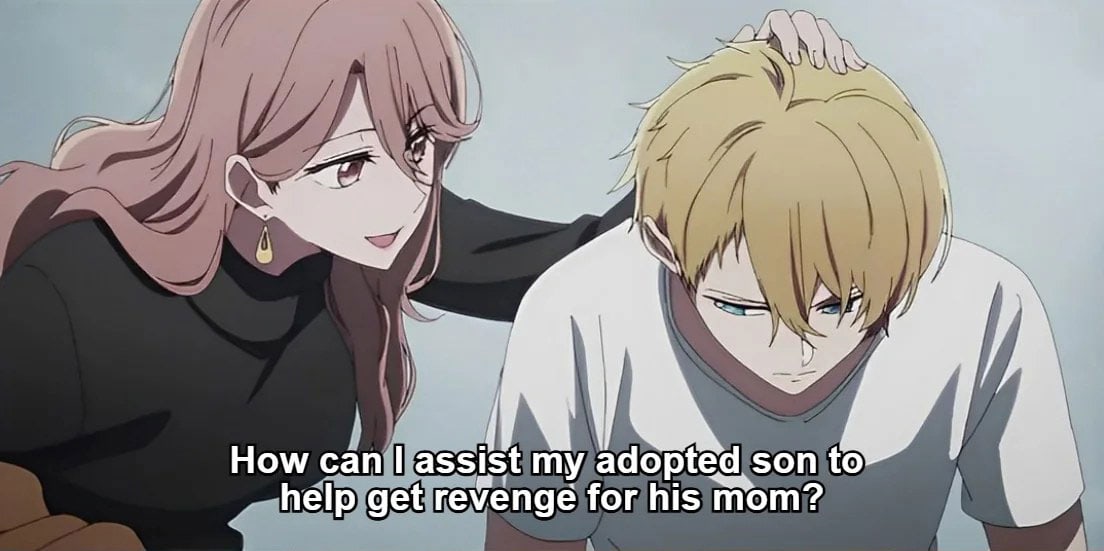
“Oshi no Ko” is a television series centered around an extraordinary premise where a doctor and his patient find themselves reborn as twins to a renowned Japanese pop idol.
The series chronicles the twins’ journey as they grow up within the high-stakes environment of the Japanese entertainment industry, highlighting their unique experiences and challenges.
Domestic Girlfriend
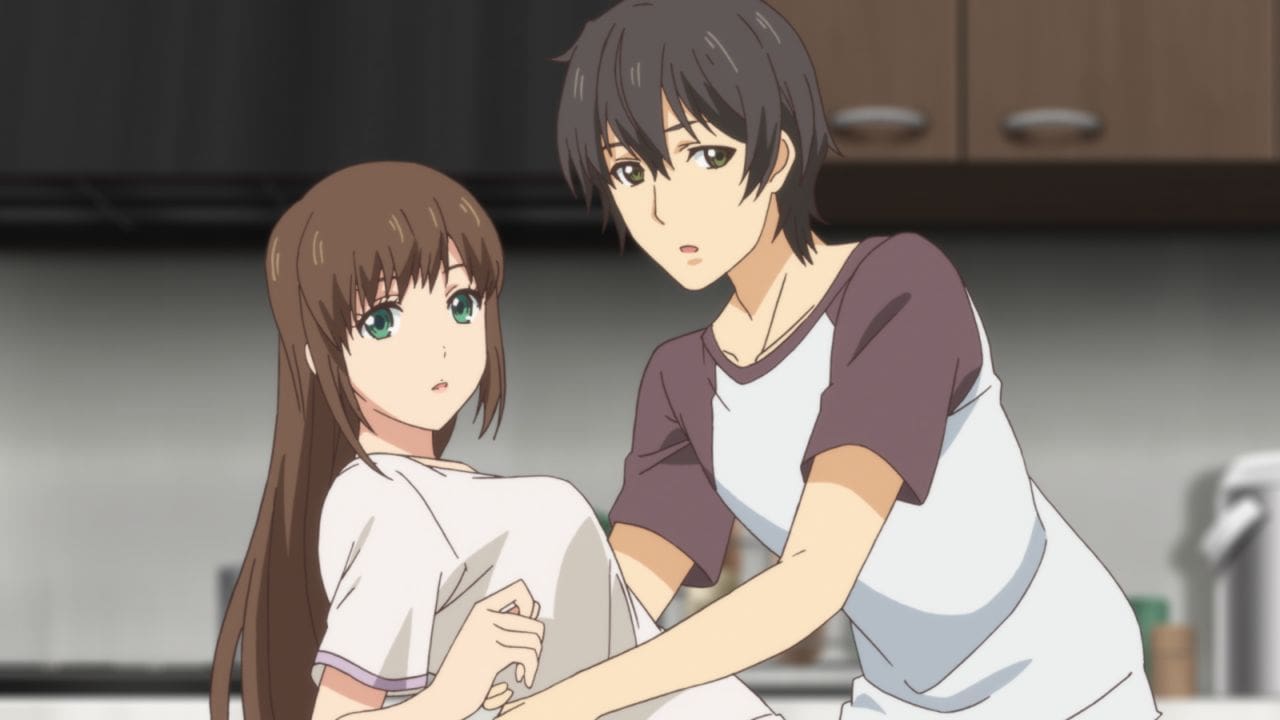
High school student Natsuo Fujii’s life becomes increasingly complex when his single father remarries, and his new stepmother turns out to be the mother of Hina Tachibana, his teacher and secret crush, and Rui, her sister with whom Natsuo has a complicated past.
This change in family dynamics creates a web of intricate relationships for Natsuo, as he navigates his feelings for Hina amidst these newfound connections.





